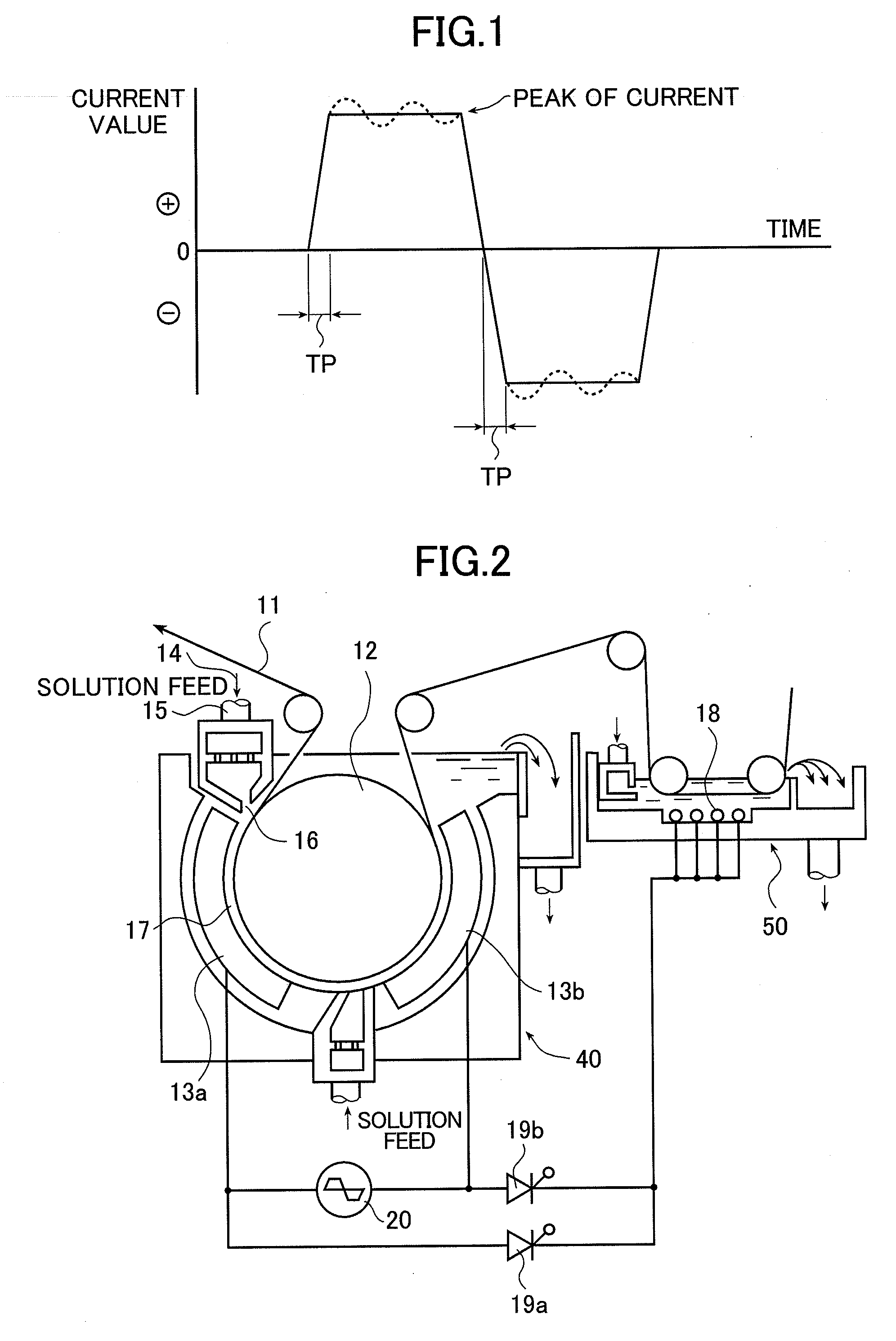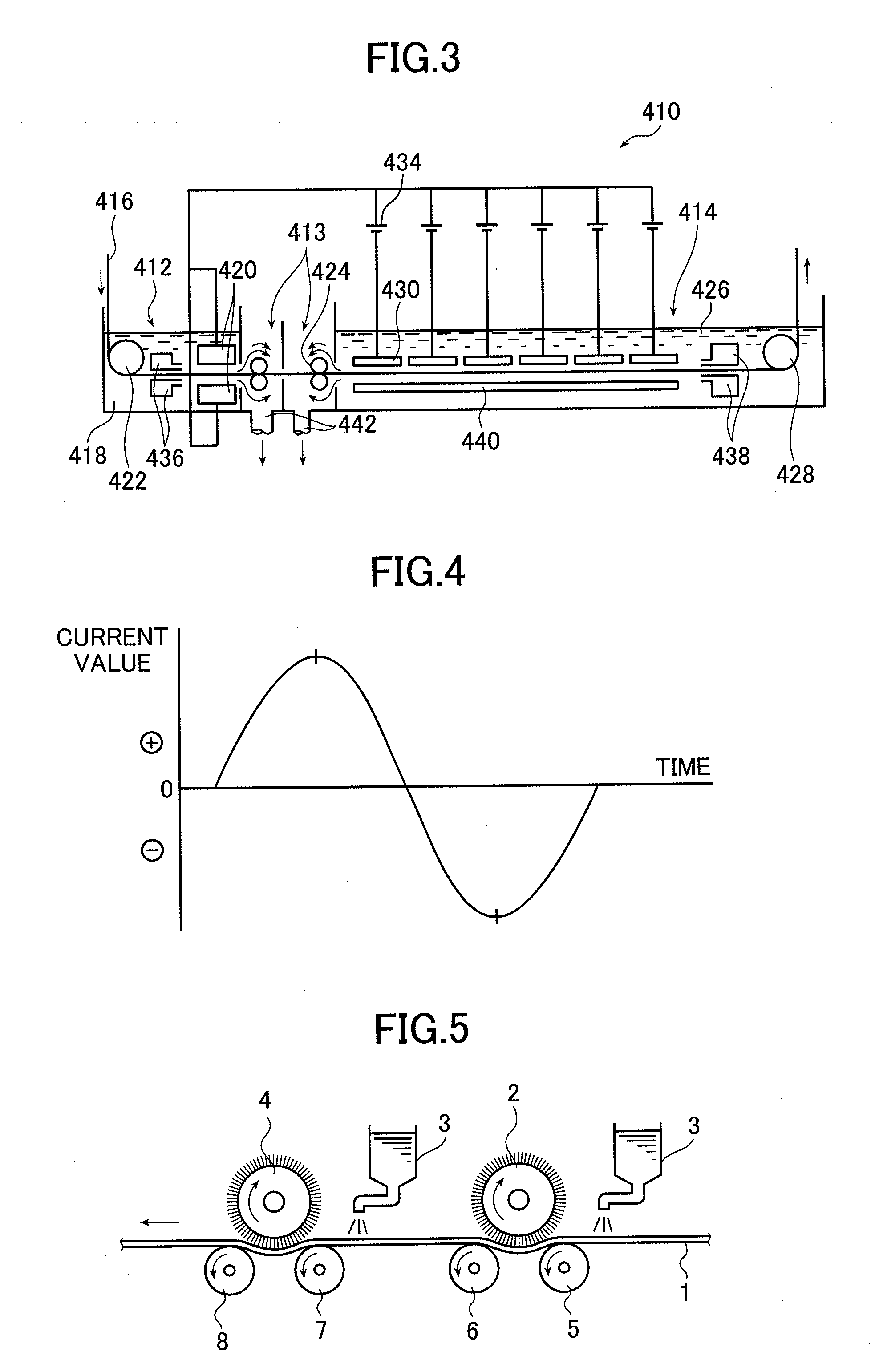Lithographic printing original plate
a technology of original plate and lithographic printing, applied in the field of preserved plate, can solve the problems of difficult to remove the image recording layer sufficiently, dot- or ring-shaped stains on printed paper, and insufficient use of support to prevent the photosensitive layer from having defects, etc., to achieve excellent scumming resistance, long press life, and long press life
- Summary
- Abstract
- Description
- Claims
- Application Information
AI Technical Summary
Benefits of technology
Problems solved by technology
Method used
Image
Examples
examples
[0837]The invention is described below in detail by way of examples. However, the invention should not be construed as being limited to the following examples.
[0838]Examples 1 to 12 and Comparative Examples 1 to 4 illustrated below are those concerning the first aspect of the invention.
[0839][Manufacture of Aluminum Alloy Plate]
examples 1 to 12
[0840]Each aluminum alloy melt of the composition shown in Table 1 was used to prepare an aluminum alloy plate by continuous casting including intermediate annealing under the conditions shown in Table 2.
[0841]An aluminum material with a very small carbide content was used and one or more carbon members were immersed at the exit of the melting furnace to adjust the content of the aluminum carbide in the aluminum melt by the number of carbon members in a range of 0 to 12.
[0842]More specifically, the aluminum alloy melt of each composition was first continuously cast by a twin roll process to a cast plate thickness of 5.5 mm.
[0843]Then, the resulting continuously cast plate was subjected to cold rolling to a plate thickness of 0.9 mm, then subjected to intermediate annealing heat treatment under the conditions shown in Table 2, and further subjected to cold rolling again to be finished to a thickness of 0.3 mm.
[0844]Then, a tension lever was used to correct the flatness to prepare an ...
examples 13 to 27
[0905]Each aluminum alloy melt of the composition shown in Table 4 was used to prepare an aluminum alloy plate by continuous casting including heat treatment (intermediate annealing) under the conditions shown in Table 5.
[0906]More specifically, the aluminum alloy melt of each composition was first continuously cast by a twin roll process to a cast plate thickness of 5.5 mm.
[0907]Then, the resulting continuously cast plate was subjected to cold rolling to a plate thickness of 0.9 mm, then subjected to intermediate annealing heat treatment under the conditions shown in Table 5, and further subjected to cold rolling again to be finished to a thickness of 0.3 mm.
[0908]Then, a tension lever was used to correct the flatness to prepare an aluminum alloy plate. The composition of each of the prepared aluminum alloy plates is the same as that of the aluminum alloy melt used therefor.
PUM
| Property | Measurement | Unit |
|---|---|---|
| length | aaaaa | aaaaa |
| diameter | aaaaa | aaaaa |
| diameter | aaaaa | aaaaa |
Abstract
Description
Claims
Application Information
 Login to View More
Login to View More - R&D
- Intellectual Property
- Life Sciences
- Materials
- Tech Scout
- Unparalleled Data Quality
- Higher Quality Content
- 60% Fewer Hallucinations
Browse by: Latest US Patents, China's latest patents, Technical Efficacy Thesaurus, Application Domain, Technology Topic, Popular Technical Reports.
© 2025 PatSnap. All rights reserved.Legal|Privacy policy|Modern Slavery Act Transparency Statement|Sitemap|About US| Contact US: help@patsnap.com



